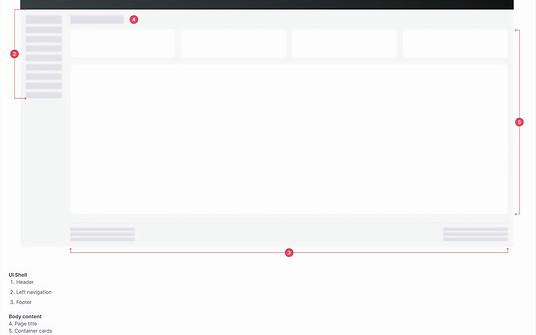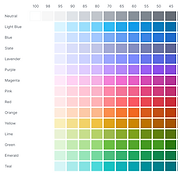Leading Design for 30 billion+ Network devices
Establishing Product Design Vision, Strategic Roadmaps, and Empowering Teams
Led the end-to-end UX strategy and execution for Cisco’s IoT Management and Security product suite, focusing on simplifying complex network operations and enhancing security workflows. Spearheaded cross-functional collaboration with product, engineering, and security teams to deliver intuitive, scalable solutions for large-scale industrial IoT environments. Successfully drove user research, design systems, and product vision alignment, resulting in improved device onboarding, streamlined policy management, and strengthened security posture across diverse IoT deployments.
A UX approach can make or break IIoT product-led growth. It requires a deep understanding of the users, user goals, and how the user will interact with the IoT device, its interactive interface & associated information.

IoT Product of the year
2022-2025
Primary role
Product Design Leader
Team Size
9 Designer's
Product Focus
Real-time Monitoring, LLM data visualization & Data Insights
Domain
Industrial Internet of Things(IIoT)
Thriving in the Eye of the Storm BEFORE DESIGN
Aligning and scaling UX-E (Enablement) design for IIoT Team as a leader

Get to know users
Get Noticed
UX Roadmap
Work as a team
Business Need - Platform Integration 6 Products in one UNIFIED CLOUD PRODUCT
Goal- ״Simplifying and unifying the IoT experience by streamlining processes, reducing complexity, enhancing communication, and delivering accessible insights—all within a single, cohesive platform.״
-
Simplify navigation and enhance user experience across all applications
-
Create unified experiences and data consistency across platforms based on network issues
-
Improve communication channels and feedback loops with teams
-
Deliver clear, accessible, and comprehensive metrics to business with UX OKRs
-
Optimize workflows by streamlining processes and minimizing complexity in new cloud product

Legacy Products



my approach
Building a Product-Focused Team, Not Pixels
Remove blockers and scale my team's impact
Craft a compelling product vision and strategy
Fostering culture through various team rituals
As we expand, we’ve needed to adjust and discover methods to enhance collaboration among these events. Here are of the key rituals we have introduced:
Design Critique: Each week, we come together to showcase our work and obtain feedback from the team. This helped us with an opportunity to refine our skills collaboratively and maintain consistency across the product.
Show & Tell Friday: Each Friday, we share our work from the week. This gives us a chance to see what everyone is doing and helps us stay connected.
Team Collaboration: While several of us worked remote, we still try to gather in person on a regular basis for those who are near our headquarters to meet for 1:1's walk or eat together.
End-to-End Journey Mapping for Cisco IoT Networking Product
To design a seamless and intuitive experience for Cisco’s IoT networking product, I began by building a foundational understanding of the system’s architecture. From there, I conducted a deep-dive analysis to map the complexities of the end-to-end user journey. This process involved:
-
Deconstructing the user journey into defined stages and tasks, uncovering the complexity of interactions across the lifecycle
-
Identifying key touch-points both digital and human, that users engage with throughout their networking experience
-
Understanding diverse user personas, including their roles, objectives, and pain points within the IoT networking ecosystem
-
Mapping system architecture, illustrating how various applications and platforms integrate and exchange data to support seamless connectivity and control
-
Analyzing operational workflows and technical dependencies that underpin network provisioning, management, and performance
-
Highlighting moments of truth and opportunities for delight to ensure the experience is not only efficient but also user-centered and engaging

This in-depth exploration allowed me to develop a holistic understanding of the IoT system’s architecture and workflows, identify critical areas for improvement, and design intuitive, user-centered experiences that align with the needs of both technical and business stakeholders.
Working closely with cross-functional teams—including product managers, engineers, and field specialists—I led the effort to define the end-to-end user journey for the IoT networking product. Together, we mapped out user roles, key tasks, and decision points across various touchpoints and scenarios.
This collaborative process helped us:
-
Align on a shared understanding of user needs, system constraints, and business goals
-
Identify friction points and inefficiencies in current workflows
-
Surface opportunities to streamline configuration, monitoring, and troubleshooting across IoT devices and platforms
-
Ensure each stage of the journey reflected real-world usage patterns, including remote operations and edge deployments
By co-creating the journey map, we built a strong foundation for designing solutions that are not only technically sound but also grounded in real user behavior and context.
Cisco IIoT Operations Dashboard. Building a product focused view Designing with the User at the Core
A Platform-Neutral Experience Framework for IoT Ecosystems
As UX lead, I led the creation of a platform-neutral framework to unify the user journey across diverse IoT devices and environments. Partnering with cross-functional teams, we identified common user needs across industrial, enterprise, and consumer segments. We developed modular components, design tokens, and adaptive guidelines to ensure consistency and scalability. Embedded into quarterly OKRs, the framework enabled faster product development, reduced technical debt, and delivered seamless experiences across our IoT ecosystem.
Driving Scalable Design System Alignment for IoT Integration within Cisco’s Enterprise Networking Portfolio
As part of the IoT product integration at Cisco, it became clear that a unified design system was essential to align with the broader Enterprise Networking portfolio. I collaborated with product leaders across multiple teams to ensure visual and interaction consistency, contributing to a shared design playbook that guided scalable, cross-product UX decisions. This playbook helped bridge the gap between IoT and core networking products, streamlining user experiences and reinforcing Cisco’s design standards across platforms.
This was a massive multi-Months effort and i certainly encountered obstacles, but I am so proud of all the I was able to that made this happen and scale to Eng. teams.


Foundation


Design Tokens



Accessibility Support and Guidelines in the Design System
The design system was built to support accessibility as much as possible out-of-the-box—for example, ensuring sufficient color contrast. However, accessibility is an ongoing effort, and some checklist items fall outside the scope of what a design system can fully address. This checklist was not created to replacement for WCAG standards; rather, it highlights key, commonly applicable guidance in a more user-friendly format.
Cisco Industrial Asset Vision (IAV) was an all-in-one IoT solution designed to monitor assets and facilities in outdoor and industrial indoor environments
The design team behind Cisco Industrial Asset Vision (IAV) played a pivotal role in developing a comprehensive IoT solution tailored for industrial asset tracking and environmental monitoring.
Mobile Application: Enabled quick onboarding of sensors and gateways using QR codes, facilitating rapid deployment .

The Cisco Industrial Asset Vision (IAV) mobile app was designed to enhance user experience for field technicians and operations teams by simplifying the deployment and management of industrial IoT sensors and gateways. Key advantages of its user experience include:
🚀 Fast and Intuitive Onboarding
UX designed QR Code Provisioning that helped sensors and gateways could be onboarded in seconds using the mobile app's QR code scanning feature, eliminating the need for manual configuration and reducing setup time.
📱 Mobile-First Design
Cross-Platform Compatibility designed and make it available on both Android (version 9 and above) and iOS (version 11 and above), the app ensured accessibility across a range of devices.Designed for ease of use in industrial environments, the app facilitated quick navigation and operation, even in challenging conditions.
Overall UX for Cisco IAV mobile app streamlined the deployment and management of industrial IoT devices, offering a user-centric experience that reduced complexity and enhanced operational efficiency.
Web Dashboard was design and developed an intuitive cloud-based dashboard for real-time monitoring, featuring interactive maps, customizable alerts, and role-based access to streamline asset management.




User-Centric Security in IIOT Product
The design team behind Cisco Industrial Asset Vision (IAV) played a pivotal role in developing a comprehensive IoT solution tailored for industrial asset tracking and environmental monitoring.
IIoT Cyber Vision platforms helped designers in overcoming challenges associated with device fragmentation, performance optimization, integration with smartphones, and data security. By leveraging the capabilities of OD platforms, IIOT UX team created cohesive, efficient, and secure experiences that enhance user satisfaction in the complex world of IIoT in scale.
Easily inventory your OT/ICS assets and their behaviors with solutions that use your network as a sensor to provide full visibility at scale—and the insights you need to reduce the attack surface.
UX HELP TO SOLVE ISSUE WITH IMPROVED USER EXPERIENCE CYBER VISION
UX Challenges in Legacy Cisco Product
-
Users often encountered multiple dashboards and interfaces, making it difficult to identify issues and business-impacting trends. This fragmentation hindered operations managers from efficiently deploying, scaling, and managing solutions .
-
The use of unfamiliar labels and misleading terminology complicated the configuration of security mechanisms. This inconsistency exacerbated the already complex process of managing security settings, leading to user errors and misconfigurations .
-
The lack of integration between network, sensors, and management dashboards resulted in long deployment cycles and complexity. This limitation made it challenging for operations managers to deploy, scale, and manage these solutions effectively.




User-Centric Security in IIOT Product




IoT Operations Dashboard services that enable operations teams to securely configure a remote connected asset or machine. These services provide granular access controls that can easily be managed by an operations administrator, and secure connectivity for authorized users, including internal employees and external workers.
HUMAN centric IIoT product Experience, idea TO REAL industry solution WITH SECURITY
“ One of the toughest things about building IIoT product design is accounting for the vast universe of factors that you have no control over "
Design your IIoT solution to scale for success. In IIoT design experience user task flow may span different devices, different interaction paradigms, and different contexts of use. This increases complexity by orders of magnitude for designing the great experience. Conversely, user expectations are also increased because users expect the experience of using these disparate connected devices in concert to be more than the sum of their individual experiences.
The key importance for me to create Cisco IIoT user experiences lies in understanding and designing for the fluid nature of IIoT interaction through good primary research into user needs. The fundamentals are still the same as other UX Projects : Understand who your users are, what they’re trying to do, and the context within which they’re trying to do it. The only difference I found during the UX scope of that context might be much, much bigger than the other product design since it connected serval touch-points during the design to development process. Creating design for users where sometime they don't have access to the devices is lot different than design for smartphones/smartwatches.
Fueling innovation with Cisco IOTOD head-to-head autonomous car race competition and where did design fits here -
01.
Users
Cisco design is empowered student to innovate further autonomous development and improve vehicle safety and performance with intuitive UI experience . How users interact with AI and build trust with machine and user experience
02.
Real time Data
Cisco IIoT Dashboard improve data collection view, improve safety information , and increase operational efficiency with new design




